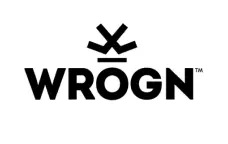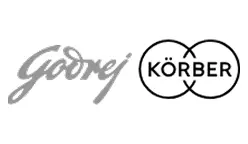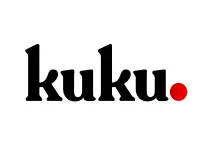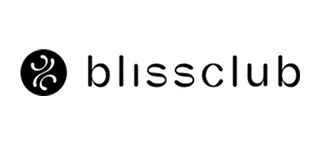Group Health Insurance
Get ₹50 Lakh Cover,
Starting At ₹7,000*/year
Quotes in seconds. Coverage in minutes.
Trusted by




















Policies Sold
on Google
Total Sum Insured
Group Health Insurance
Get ₹50 Lakh Cover,
Starting At ₹7,000*/year
Get Quotes in a Few Steps
Policy Provided by



Get ₹50 Lakh Cover,
Starting At ₹7,000*/year
Group Health Insurance
Protects employees from high medical expenses & bills
WhyChoose BimaKavach?

Speed
Quotes in seconds, coverage in minutes!
Service
Dedicated support, quick replies!
Savings
Best prices, maximum savings!
Understand
Your Insurance
Before Buying
Group Health Insurance Made Easy
Click on any topic to see the answer.
To share a topic, click the link icon next to it.
Understand
Your Insurance
Before Buying
Group Health Insurance (GHI) is a smart way for businesses to take care of their employees' health needs. It covers the medical expenses of a group of people, usually employees of a company, under a single policy. This includes hospitalisation, surgeries, treatments, and other healthcare services. The employer usually pays the premium, either fully or partially, making it easier and more affordable for employees to get health protection. It is also called Corporate Health Insurance, Group Mediclaim Policy, Group Medical Insurance, Employee Health Insurance, or Employer Group Health Insurance.
See More...Offering Group Health Insurance is no longer optional. It plays a direct role in attracting good talent, improving work performance, and staying legally compliant. Here are some key reasons why every business should give it importance:
Important for Hiring
A study by the Society for Human Resource Management (SHRM) found that 6 out of 10 employees see health insurance as a major factor when accepting a job. If you want to hire skilled and serious workers, offering Group Health Insurance matters.
Helps Keep Productivity High
The World Health Organisation (WHO) notes that health issues can reduce an employee's work output by 20 to 25%. Group Health Insurance ensures faster access to treatment, so your team stays fit and focused on their work.
Gives You Tax Relief
Health premiums paid by employers are eligible for tax deductions under Section 80D of the Income Tax Act. Group Health Insurance reduces your tax burden while helping your team stay protected. Not using this can mean lost savings.
Meets Legal Rules
Laws like the Social Security Code, 2020, require businesses in certain sectors to provide health insurance to their employees. Ignoring this rule could result in penalties or delays in government approvals.
Creates Long-Term Trust
When employees know their health is covered, it builds a sense of care and security. They are more likely to stay, perform better, and speak positively about your company.
Protects Against Unexpected Medical Crises
Sudden illnesses, accidents, or surgeries can happen at any time. For small businesses and larger firms alike, Group Health Insurance makes sure the team gets treatment without delay or money stress.
Supports Smaller Businesses During Emergencies
For small businesses and mid-sized companies, even one major medical case can strain the team and slow daily work. Group Health Insurance eases that strain by paying the hospital bills.
Shows That the Business Plans for the Long Term
Group Health Insurance signals to employees and partners that the business is thinking ahead and is prepared to grow responsibly.
Improves Confidence Across the Team
When your people know their health is secure, they feel more confident at work. It removes a major worry from their minds and helps them focus better.
Group Health Insurance offers real support to employees by reducing medical costs, easing stress, and ensuring access to quality care. It is also seen as a valuable workplace benefit that can influence career choices.
Here are some key ways Group Health Insurance supports employees:
Financial Protection
Group plans help protect employees from the high cost of medical care.
Peace of Mind
Knowing they have insurance coverage can reduce stress and anxiety about medical expenses.
Access to Healthcare
Ensures access to necessary medical care, potentially improving employee health and well-being.
Career Advancement
Group health insurance is a significant benefit, which can be a factor in employees choosing to work for a company.
Employee Satisfaction
Providing health cover is a meaningful benefit that can improve employee morale and job satisfaction.
Reduced Turnover
Group Health Insurance plays a strong role in attracting new employees and encouraging existing team members to stay longer.
Strengthens Team Loyalty
Employees feel secure and supported when they have health cover. This builds long-term loyalty and reduces staff turnover.
Assists During Team Health Emergencies
If a serious health issue affects any employee, Group Health Insurance helps cover the medical costs. This reduces sudden financial pressure on the business.
Supports Smooth Business Operations
Insured employees recover faster and return to work sooner. This helps your business run without major disruptions.
Improves Your Company’s Reputation
Providing Group Health Insurance builds your company’s image as a caring and responsible employer. It helps attract skilled workers and makes people want to join and stay.
Cost-Effective
By negotiating group rates, businesses can manage insurance costs better than through individual plans.
Tax Benefits
Employers may also receive tax deductions for the health insurance premiums they pay.
Group Health Insurance offers several useful features that make it a smart and convenient choice for both employers and employees. These features help ensure that the policy provides real support during health-related events. Here is what you can expect:
Covers a Group Under One Policy
Group Health Insurance covers all eligible employees under a single plan. It is easy to manage and helps avoid the need for separate health covers for each person.
Cashless Hospital Network
Employees can get treated at partner hospitals without paying upfront. The insurer settles the hospital bill directly, making the process smooth and stress-free.
Includes Family Coverage Options
Many plans allow coverage for employee family members, such as spouses, children, or parents. This makes the Corporate Health Insurance Policy more useful and valuable.
No Medical Check-up Needed for Joining
Most Group Health Insurance plans do not require medical tests before enrolling. This saves time and allows quick coverage from day one of employment.
Covers Pre- and Post-Hospitalisation Costs
Expenses before and after hospital admission, such as tests, scans, and follow-ups, are usually included. This gives full-cycle medical protection.
Add-Ons and Customisation
Employers can enhance the policy by adding extra covers like maternity, critical illness, or accident benefits. This helps match the cover with employee needs.
Daycare Procedures Covered
Group Health Insurance covers modern medical procedures that do not need full-day hospital stays, like cataract removal or dialysis.
24x7 Claim Support
Insurers provide round-the-clock assistance for claims through phone, email, or mobile apps, making the process faster for Corporate Health Insurance.
Group Health Insurance provides strong, all-round protection for your employees and their families. It is designed to offer immediate medical support without long waits or extra conditions. These inclusions ensure that the coverage is useful right from day one and during every step of treatment.
Here is what is usually included under a standard Group Health Insurance plan:
Covers Pre-Existing Diseases
Unlike many individual policies, Group Health Insurance usually covers pre-existing conditions from the start. This means employees with long-term health issues like diabetes, asthma, high blood pressure, or thyroid disorders do not have to wait for several months or years to get covered. The Corporate Health Insurance Policy takes care of medical costs related to these conditions immediately, offering peace of mind to employees who may need regular care.
No Copay from Employees
In a copay system, the employee has to bear a part of the hospital bill from their own pocket. However, most Group Health Insurance plans remove this burden. There is no copayment involved. The insurer pays the full approved claim amount as per the policy terms. This makes medical treatment more affordable and helps employees focus on recovery instead of worrying about payment.
No Waiting Period to Make Claims
In individual insurance, there is usually a waiting period—sometimes as long as 2 to 4 years—before certain illnesses are covered. Group Health Insurance removes this delay. Employees are covered from day one of the policy, and they can raise a claim immediately if needed. This is especially important in cases of accidents, surgeries, or emergency hospitalisation.
Covers Day Care and In-Patient Treatments
Medical technology has improved. Many treatments no longer need a full-day hospital stay. Group Health Insurance includes these modern, short-duration treatments, called daycare procedures. This may include cataract surgery, chemotherapy, dialysis, and more. At the same time, Group Health Insurance also covers in-patient treatments, where the employee stays in the hospital for over 24 hours. This could be for operations, infections, or injuries.
Includes Pre- and Post-Hospitalisation Costs
Treatment does not start and end in the hospital alone. There are tests, scans, and doctor visits before admission. There are follow-ups, medicine bills, and routine checks after discharge. A good Group Health Insurance plan covers these costs as well. Pre-hospitalisation is usually covered for 30 days before admission, and post-hospitalisation for 60 or 90 days after discharge, depending on the policy.
Standard Group Health Insurance offers strong coverage, but it may not include everything your employees need. That is where add-ons come in. These optional covers allow employers to enhance the plan and offer extra protection for everyday health needs and specific life events.
Here are some common add-ons that businesses often include to make their insurance offering more complete:
Outpatient Department (OPD) Cover
OPD expenses are part of regular health care, but they are usually not covered under the basic policy. This add-on includes the cost of doctor consultations, diagnostic tests, medicines, and small procedures that do not require hospital admission. OPD cover is especially useful for employees with chronic conditions such as diabetes or joint pain, who may need to visit doctors often. It also supports early diagnosis, which helps avoid serious illness later.
Maternity Cover
Maternity cover takes care of medical expenses related to childbirth. It usually includes both normal and caesarean deliveries, along with doctor consultations, pre-natal check-ups, maternity room charges, and sometimes even newborn care for the first few days. This add-on to Group Health Insurance brings peace of mind to expecting parents and is very important for companies with younger employees or those planning to start families. Offering this benefit shows that the employer cares about their personal milestones too.
Ambulance Charges
During medical emergencies, quick transport to a hospital can save lives. The ambulance add-on to Group Health Insurance covers the cost of emergency ambulance services, whether for short distances or in critical conditions that require life support systems on board. Without this cover, employees might have to pay out of pocket or delay treatment due to cost worries. This add-on ensures they get the right help, on time.
Corporate Floater Cover
Every employee has a fixed sum insured under the main Group Health Insurance Policy. But medical bills can sometimes exceed this limit. The corporate floater is a shared extra amount available to all employees. If one person uses up their individual limit, they can dip into the corporate floater to cover the remaining costs. This add-on is especially useful in high-value claims, such as major surgeries or long hospital stays. It acts as a financial backup and adds more flexibility to the policy.
Group Health Insurance offers valuable support during medical emergencies, but like all insurance policies, it also comes with clear limits. These exclusions are specific conditions or situations where the insurer will not pay for the treatment or related expenses.
It is important for both employers and employees to be aware of these exclusions. This helps avoid confusion at the time of a claim and ensures that the policy is used correctly.
Self-Inflicted Injuries
Any injury or illness that is caused by the insured person on purpose is not covered under Group Health Insurance. This includes suicide attempts, self-harm, or actions that result in harm to oneself knowingly. Even if hospitalisation is needed after such an event, the policy will not pay for the treatment. The insurance is meant for accidental or natural health problems, not intentional acts.
Abuse of Intoxicants
If an illness or injury occurs due to the use of alcohol, drugs, or any other addictive substance, Group Health Insurance will not provide cover. For example, if someone is admitted to hospital because of alcohol poisoning or an accident that happened under the influence, the cost will not be covered. The plan does not support medical treatment linked to substance misuse.
War and Nuclear Perils
Health issues that result from war, war-like actions, civil unrest, acts of terrorism, or nuclear accidents are not covered under Group Health Insurance. These events fall under high-risk zones, and claims arising from such situations are excluded by most insurers. This rule applies whether the incident happens inside the country or outside.
Cosmetic or Aesthetic Treatments
Treatments that are done purely for personal appearance or cosmetic improvement are not included under Group Health Insurance. This may include procedures like lip surgery, face lifts, hair transplants, body shaping, or laser treatments for skin. However, if cosmetic surgery is needed because of an accident or medical need, some policies may allow it—only if it is pre-approved by the insurer.
Dental Treatment (Routine or Cosmetic)
Routine dental care, such as cleaning, fillings, tooth removal, or fitting braces, is not part of a Group Health Insurance Policy. Cosmetic procedures like teeth whitening or smile correction are also not included. Only dental treatment required due to an injury or accident may be covered in some plans, but this depends on the policy terms.
Substance Abuse-Related Treatment
Treatment or hospitalisation needed due to drug or alcohol addiction, including rehabilitation programmes, counselling, or therapy, is usually excluded under Group Health Insurance. Unless a separate mental health or substance abuse add-on is taken, these costs will not be paid by the insurer. This also applies to any complications that arise from long-term use of harmful substances.
Involvement in Illegal Activities
If an employee is injured while committing or taking part in a criminal or unlawful act, Group Health Insurance will not cover their medical bills. For example, injuries during theft, assault, or while escaping from the police are not eligible for claims. The insurance is designed to help during genuine health problems, not during activities that break the law.
Group Health Insurance is meant for businesses and organisations that want to offer health cover to their employees or members. It is not the same as buying an individual health policy. There are a few basic conditions that must be met to be eligible for purchasing a group plan.
Minimum Group Size
Most insurers require a minimum of 7 to 10 people to form a group for Group Health Insurance. This group can include full-time employees, contract workers, or members of a registered association. Smaller businesses with fewer than the required number may not qualify for a group policy.
Formal Group Structure
For Group Health Insurance, the group must be officially recognised. It can be a company, partnership firm, cooperative society, association, club, or any registered organisation. The relationship between the group and its members must be clear and well-documented. A group created only for the purpose of buying insurance will not be accepted.
Policyholder Must Be the Group Administrator
The Group Health Insurance Policy must be purchased in the name of the organisation or group administrator, not in the name of individual members. The employer or admin is responsible for paying the premium, managing the policy, and coordinating with the insurer.
Employee Consent and KYC
Basic KYC documents like identity proof and address proof may be required for each covered member under Group Health Insurance. In some cases, insurers may ask for a list of insured members with details such as date of birth, gender, and relationship (if dependents are also covered).
Premium Payment by the Group or Employer
The premium must be paid by the employer or group organiser for Group Health Insurance. Some companies may also share the premium cost with their employees, but the payment must be made from a central source to keep the policy active.
Group Health Insurance makes hospitalisation easier by offering a cashless facility. This means you can get treated at a network hospital without paying the bill upfront. The insurance company will settle the approved amount directly with the hospital.
You can use the cashless facility at any hospital that is part of the insurer’s approved network. You only need to pay for non-medical items, as per the policy terms. For planned treatments, it is better to apply for cashless approval at least three days before admission.
However, there are a few steps you need to follow to make sure everything goes smoothly:
Submit Documents at the Hospital
Go to the hospital’s cashless desk and give them the following:
- Your insurance card
- Your employee ID
- A valid government ID (such as Aadhaar or PAN card)
Fill the Cashless Request Form
The form will ask for basic details such as:
- Insurance card number
- Employee code
- Policy number
- Your name and patient’s name
- Age and contact number
Doctor Completes Medical Details
The attending doctor will fill in the diagnosis, suggested treatment, estimated cost, and number of days of hospital stay. The hospital will then send this form to the insurance company for approval.
Approval from Insurer
The insurance company usually responds within three hours. The hospital will receive either an approval or a query via email or fax. If there is any delay, you can follow up with the hospital’s cashless helpdesk.
During Hospital Stay
If the doctor advises you to stay longer than planned, inform the hospital’s cashless team. They will request additional approval from the insurer.
At the Time of Discharge
When treatment is complete, the hospital will prepare the final bill and send it to the insurance company. The insurer will directly pay the approved amount to the hospital. You only need to settle charges that are not covered under the policy, such as registration fees or non-medical items.
If the hospital is not part of the insurer’s network, or if you choose to pay upfront and get reimbursed later, you can still claim the medical expenses through the reimbursement process. Here is how to go about it step by step:
Step 1: Intimation of Hospitalisation
You must inform BimaKavach within 24 hours of admission. If it is a planned hospital visit, you can also give advance intimation. This can be done through the BimaKavach portal or by sending an email to claims@bimakavach.com, with your HR in copy (cc).
Details required for intimation:
- Employee Name
- Employee Code
- Company Name
- Patient Name
- Relationship with the Patient
- Reason for Admission
- Date of Admission
- Hospital Name
- Hospital Address
- Approximate Claim Amount
Once you send this information, you will receive a mail acknowledgement within four hours, which also includes the full reimbursement procedure.
Step 2: Submit Claim Documents After Discharge
After discharge, you must submit all required claim documents within 30 days. These include hospital bills, discharge summary, prescriptions, medical reports, and other proofs. BimaKavach will also send three reminders to help ensure timely submission.
Step 3: Claim Acknowledgement
Once your documents are received and registered, you will get an email confirming receipt and that the claim is under review.
Step 4: Claim Status Update
Within five working days, you will receive a claim status update. If something is missing, you will get a query email with instructions. You will have seven days to submit the missing or extra documents.
Step 5: Claim Settlement
If your claim is approved, the amount will be credited to your bank account within seven to ten working days. You will receive an email with the settlement details.
Step 6: Feedback Request
After claim settlement, BimaKavach will send you a feedback email to understand your experience and improve future service.
For Group Health Insurance, submitting complete and clear documents helps the insurer process your claim quickly. Keep the originals safe and ensure every page is readable. Below is a simple checklist:
Mandatory Documents Under Corporate Health Insurance
Filled Claim Form
- Part A: Completed by the employee or family member.
- Part B: Completed and signed by the treating hospital.
Final Hospital Bill
- Itemised charges for room, medicines, doctor fees, and services.
- Proof of full payment if you have paid upfront.
Discharge Summary
Includes dates of admission and discharge, diagnosis, and treatment details.
Prescriptions and Medicine Bills
- Doctor-signed prescriptions.
- Original pharmacy invoices with batch numbers and prices.
Diagnostic and Laboratory Reports
- X-rays, scans, blood tests, and other investigation results.
- Receipts for each test.
Photo Identity Proof
Copy of Aadhaar card, PAN card, or passport for the patient.
Cancelled Cheque or Bank Passbook Copy
Shows the account number, IFSC code, and account holder name for payment.
Supporting Documents (When Applicable) Under Corporate Health Insurance
Pre-Authorisation Approval Letter
For cashless cases where part of the bill was already approved.
Implant Stickers and Certificates
For surgeries using stents, pacemakers, or joint implants.
Doctor’s Certificate of Accident
If the claim relates to an accident.
Police FIR or Medico-Legal Report
For road accidents or injuries due to assault.
Employer’s Cover Letter
Summarising employee details and confirming policy status.
Here are a few real-life examples that show how Group Health Insurance has helped employees during medical emergencies and planned treatments:
Gallbladder Surgery for a Brand Manager
In 2024, an automobile parts plant in Pune had a brand manager who suffered sudden abdominal pain. Doctors diagnosed gallstones, and surgery was required the same week. The firm’s Group Health Insurance plan approved a cashless claim at a network hospital. The insurer paid ₹1.6 lakhs for the surgery, room charges, medicines, and five days of hospital stay. The employee returned to duty in two weeks without facing any financial stress.
Maternity Claim for a Software Engineer
In 2023, an IT firm in Bengaluru welcomed good news when a team member gave birth to twins. The company had added maternity cover to its Group Health Insurance. The insurer settled ₹90,000 for delivery expenses, doctor fees, and newborn care. The employee used her paid leave to recover and re-joined work confidently, thankful that her savings remained untouched.
Dengue Treatment for a Sales Executive
During the 2024 monsoon season, a consumer-goods company in Kolkata saw one of its sales staff admitted with high fever. Tests confirmed dengue. The employee needed platelet transfusions and six days in hospital. Under the Group Health Insurance Policy, the insurer reimbursed ₹55,000 covering hospital bills, diagnostic tests, and post-hospitalisation medicines. Timely payment helped the employee focus on recovery instead of costs.
Road Accident Surgery for a Nurse
In 2021, a healthcare start-up in Lucknow faced an emergency when one of its nurses met with a road accident while travelling home after a night shift. She suffered a fractured leg that required surgery and physiotherapy. The Group Health Insurance plan paid ₹2.4 lakhs for surgery, implants, rehabilitation sessions, and follow-up X-rays. The support ensured she received proper care and could gradually return to work.
Heart Attack Claim for a School Teacher
In 2020, a private school in Jaipur had enrolled its staff under a Group Health Insurance Policy. A senior teacher experienced chest pain and was rushed to a nearby network hospital, where doctors performed an angioplasty. The insurer settled the cashless claim of ₹3 lakhs covering the procedure, stent cost, ICU stay, and cardiac medicines. The teacher resumed classes after medical clearance, relieved that large hospital bills were fully covered.
Understanding a few basic terms will help you read policy documents with confidence and avoid surprises at claim time. Here are the key words explained in simple language:
Sum Insured
The sum insured is the highest amount the insurer will pay for each insured person in one policy year under Group Health Insurance. If your hospital expenses rise above this limit, you will need to pay the extra cost yourself. Knowing this figure helps you choose cover that matches your possible medical expenses.
Premium
The premium is the yearly price the employer pays to keep the policy active. A higher sum insured, wider benefits, or extra add-ons will increase this cost. The insurer decides the premium after studying the group’s age mix, past claims, and chosen limits.
Waiting Period
Under Group Health Insurance, a waiting period is the length of time when certain illnesses or benefits remain excluded. Many group health plans remove long waits, but some may still apply a short thirty-day wait for new illnesses or a nine-month wait for maternity if the employer has not asked for a waiver.
Dependent
Under Group Health Insurance, a dependent is a family member such as a spouse, child, or parent who shares the employee’s policy. Adding dependents means the same cashless and reimbursement benefits apply to the family, though the premium rises to reflect the extra cover.
Pre-Existing Disease
A pre-existing disease is any health condition, such as diabetes or hypertension, that existed before the policy start date. Good group plans cover these conditions from day one, so employees can claim without delay and focus on timely treatment.
Co-Payment (Copay)
A co-payment is a fixed share of every claim that the member must pay. If a policy has no copay, the insurer settles the whole approved bill. Copays help lower the premium but shift some cost to the employee at claim time.
Room Rent Limit
The room rent limit sets the maximum daily room charge the policy will pay. If you choose a room that costs more than this limit, you will pay the difference, and other hospital costs may also be reduced in the same ratio.
Network Hospital
A network hospital is a medical facility that has an agreement with the insurer. At these hospitals you can use the cashless feature. The insurer pays the hospital directly, which saves you from arranging large sums during treatment.
Cashless Claim
Under Group Mediclaim Insurance Policy for employees, a cashless claim allows the insurer to pay the hospital straight away. You present your insurance card, the hospital sends a pre-authorisation request, and once approved, you settle only non-medical extras such as visitor meals or registration fees.
Reimbursement Claim
A reimbursement claim applies when you first pay the hospital bill yourself. After discharge, you send all original bills and forms to BimaKavach within thirty days. The insurer then checks the papers and repays the approved amount to your bank account.
Day-Care Procedure
A day-care procedure is a treatment that uses modern methods and needs less than twenty-four hours in hospital, for example cataract surgery or dialysis. Group health policies usually cover these treatments like any full hospital stay.
Add-On (Rider)
An add-on, also called a rider, is an extra benefit that the employer can attach to the base policy. Common add-ons include maternity cover, outpatient care, or critical illness cover. Each add-on raises the premium but widens the protection.
Deductible
A deductible is a set amount you must pay from each claim before the insurer starts paying. Most employee health plans set this at zero, but some employers choose a small deductible to lower the premium.
Sub-Limit
A sub-limit is a smaller cap inside the sum insured for certain treatments, such as cataract surgery or knee replacement. Any cost above the sub-limit must be paid by the employee, even if the main sum insured has not been used up.
Corporate Floater
A corporate floater is an extra pool of money shared by all employees in the policy. If one member uses up their individual sum insured, they can draw from this common pool, giving the group added protection without buying a higher cover for everyone.
Top-Up Policy
A top-up policy gives extra cover above a stated threshold. When the claim amount crosses the threshold, the top-up begins paying. Employers often buy top-ups for senior staff to increase cover without raising the base premium for the whole team.
No-Claim Bonus (NCB)
An NCB is a reward for having zero claims in a policy year. At renewal, the insurer either increases the sum insured or reduces the premium, helping the employer save money while still offering higher cover.
Sub-Limit on Specific Ailments
A sub-limit is a smaller cap within the overall sum insured for selected treatments like cataract surgery or knee replacement. If the bill exceeds this cap, the employee must pay the difference out of pocket, even when some overall cover is unused.
Cashless Approval Time
Cashless approval time is how long the insurer or TPA takes to clear a cashless request from the hospital. For planned admissions, approval usually arrives in under three hours, letting treatment start promptly and reducing patient stress.
Real Review for Real Speed
Vishal Sharma
FounderAutopilot Design


Common Questions Answered
Common Questions Answered
Have questions or need to speak to an expert?
Group Health Insurance is a type of health coverage provided to a group of people, usually employees of a company or organisation, under a single policy.
It offers financial protection against medical expenses and is often a key employee benefit. Group plans typically cover a range of medical services, including doctor visits, hospitalisations, surgeries, and prescription drugs.
Most insurers set the minimum at seven full-time employees. A few may accept five lives if the firm is a registered start-up or belongs to a recognised trade body. The basic rule is that the group must already exist for a purpose other than buying insurance.
- Group Coverage: It covers a specific group of people, such as employees, and their eligible dependants.
- Employer-Sponsored: Often offered by employers as a benefit, either fully or partly funded by the employer.
- Lower Premiums: Group plans usually have lower premiums per person because the risk is shared across a larger group.
- Pre-existing Conditions: Group plans often do not have long waiting periods for pre-existing conditions, providing immediate cover.
- Comprehensive Coverage: Covers a wide range of medical needs, including doctor visits, hospital stays, surgeries, and prescribed medicines.
- Dependent Coverage: Many plans allow employees to add their spouses, children, and sometimes other dependents under the same policy.
Group Health Insurance is typically offered to members of a specific group, such as employees. Individuals cannot purchase it on their own. There must be a minimum of 7 employees to qualify for a group plan. These plans can be either contributory, where employees pay a part of the premium, or non-contributory, where the employer pays the entire premium.
A group policy covers many employees under one contract that the employer buys. Premiums are often lower, and there are few medical checks. A personal plan protects one family only, costs more per person, and may impose waiting periods or health tests before cover starts.
Have questions or need to speak to an expert?
Learn More About
Group Health Insurance
Ready To Buy
Business Insurance?
Join 4,000+ Indian businesses & protect your business today.